The Alberto José Armando Stadium is a football stadium located in La Boca, Buenos Aires, Argentina. The stadium is widely known as La Bombonera (Spanish pronunciation: [la βomboˈneɾa]; English: The chocolate box) due to its shape, with a "flat" stand on one side of the pitch and three steep stands around the rest of the stadium.
The stadium is owned by Boca Juniors, one of Argentina's top football clubs, which has over 16 million fans (the most in Argentina). The unusual shape of the stadium has led to it having excellent acoustics and the Boca support being nicknamed "La Doce". The pitch at La Bombonera is 105m × 68m.
The stadium is widely regarded as one of the most iconic stadiums in the world and has been declared of public interest by the government of Buenos Aires, an autonomous city. The stadium is also used as a concert venue. Past performers at La Bombonera ...Read more
The Alberto José Armando Stadium is a football stadium located in La Boca, Buenos Aires, Argentina. The stadium is widely known as La Bombonera (Spanish pronunciation: [la βomboˈneɾa]; English: The chocolate box) due to its shape, with a "flat" stand on one side of the pitch and three steep stands around the rest of the stadium.
The stadium is owned by Boca Juniors, one of Argentina's top football clubs, which has over 16 million fans (the most in Argentina). The unusual shape of the stadium has led to it having excellent acoustics and the Boca support being nicknamed "La Doce". The pitch at La Bombonera is 105m × 68m.
The stadium is widely regarded as one of the most iconic stadiums in the world and has been declared of public interest by the government of Buenos Aires, an autonomous city. The stadium is also used as a concert venue. Past performers at La Bombonera have included Lenny Kravitz, Elton John, James Blunt, the Bee Gees, and the Backstreet Boys.
 The old Boca Juniors stadium in Brandsen and Del Crucero, where Boca Juniors played from 1924 to 1938
The old Boca Juniors stadium in Brandsen and Del Crucero, where Boca Juniors played from 1924 to 1938In 1921, following several years of financial difficulties and lack of funds, Boca Juniors put out a fundraising drive to raise money for their next stadium. The drive was successful, with Boca raising enough money to initially rent, then buy, a new stadium. The land they chose, which would become La Bombonera, was owned by Ferro Carril del Sud, which was originally used as a shunting yard, giving them a home for the foreseeable future. The land was also close to railway lines that led out of the city.[1]
Prior to La Bombonera, Boca Juniors had used several locations before settling on their current ground on Brandsen. The club's first ground had been located in Dársena Sur[2] of the old Buenos Aires port (currently Puerto Madero) and Isla Demarchi[3][4] before moving to Brandsen and Del Crucero (currently Del Valle Iberlucea) streets in 1924. The club built a stadium there.[5] This would be their home venue until the construction of La Bombonera at the same location.
In 1931, Boca Juniors' steering committee (led by president Ruperto Molfino) acquired the lands from the Municipality of Buenos Aires for A$ 2,200,000. Three years later, the club published a call for tenders to build its new stadium.[6] The project was finally granted to the Delpini-Sulcic-Bes architectural office,[7] which would also design Abasto Shopping in the 1990s.
The old stadium (still with wooden grandstands) was used for the last time on April 10, 1938, before being demolished to build the new stadium at the same location. While La Bombonera was under construction, Boca Juniors played their home games at the Ferro Carril Oeste stadium.
Opening and later refurbishments The stadium under construction.
The stadium under construction.The stadium finally opened on May 25, 1940, with a friendly match between Boca and San Lorenzo, which the home side won 2–0 with both goals scored by Ricardo Alarcón. Due to the fact that the stadium did not have a lighting system, the game only lasted 70' (two halves of 35' each).[8]
The first official game at the new stadium was on June 2, 1940, when Boca Juniors beat Newell's Old Boys 2–0. Ricardo Alarcón (who had scored in the opening game v. San Lorenzo) scored the first official goal at the new venue.[9]
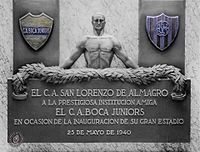 Plaque donated by San Lorenzo de Almagro on the occasion of the inauguration of La Bombonera, May 1940.
Plaque donated by San Lorenzo de Almagro on the occasion of the inauguration of La Bombonera, May 1940.After the stadium was inaugurated, the club continued to introduce refurbishments to expand its capacity. As a result, on November 16, 1941, a second tier was opened on the north side of the stadium, near Casa Amarilla train station. The grandstand was named "Natalio Pescia" in honour of one of the key players in Boca Juniors' history.[10] In 1949, the club decided to add a third tier, as well as a lighting system. All of those works were completed in 1953;[11] this third tier gave the stadium its enduring nickname, La Bombonera.[12] Boca Juniors celebrated with a friendly match vs. Yugoslav club NK Hajduk Split, which ended 1-1.[13]
 La Bombonera during a night game v. Colo Colo, with the refurbished boxes at right, March 2008.
La Bombonera during a night game v. Colo Colo, with the refurbished boxes at right, March 2008.The stadium was named on April 20, 1986, by team President Antonio Alegre in honor of Camilo Cichero, a former team president under whose tenure work on La Bombonera began. It was renamed on December 27, 2000, by team President Mauricio Macri in honor of Alberto Armando, team president during its resurgence during the 1960s as well as a former business partner of his father Francisco Macri. The stadium was expanded and modernized during Macri's tenure, notably with the addition in 1996 of a fourth tier; and a wing housing a press area, VIP boxes, a museum, and offices. The stadium's exterior was later decorated with works by painters Rómulo Macció and Pérez Celis.[14]
Since then, La Bombonera was not remodeled until 1996 when the presidency of Mauricio Macri decided to expand its capacity to 57,500 spectators. Works included the demolition of the lateral boxes on Del Valle Iberlucea street, replacing them by a small stand and new and modern boxes (with metallic structure) placed over there. The "new" Bombonera was reinaugurated with a friendly match v. Club Universidad de Chile won by Boca Juniors by 3–1.[15]
An electronic screen was installed in 2008,[16] making Boca Juniors' stadium the third venue in Argentina with this technology, after the stadiums of Vélez Sársfield and River Plate. At the beginning of 2012, more than 500 seats were replaced and other 500 were added, part of the building of four additional boxes.
CharacterThe stadium is notable for the artwork and murals both inside and around the stadium. One of the murals inside the stadium honors the different divisions within the club and many of the clubs legendary players and figures, including Diego Maradona.[17] The mural is made of tile painted blue and yellow and metal busts and sculptures. Several murals outside the stadium depict the lives of residents of La Boca, usually dockworkers, and people wearing Boca Juniors jerseys and apparel.[17]
The stadium is noted for its tendency to shake with heavy fan activity during matches. According to writer Christopher Thomas Gaffney, “La Bombonera does not shake, it beats.”[18] The stadium is also renowned for its location within La Boca, with spectators able to see the dockyards on the Atlantic coast from the highest reaches of the stadium. The stadium is one of many in the city proper of Buenos Aires, with football stadiums far outnumbering other sporting grounds, such as polo grounds and race tracks.[18]
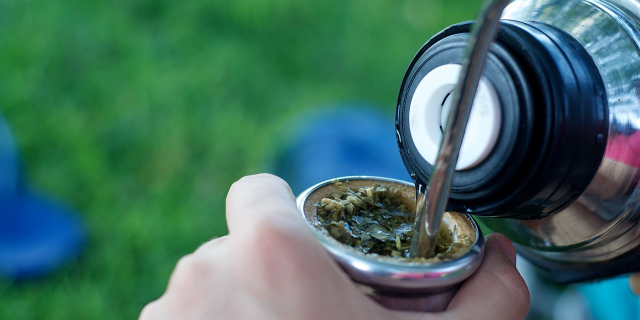

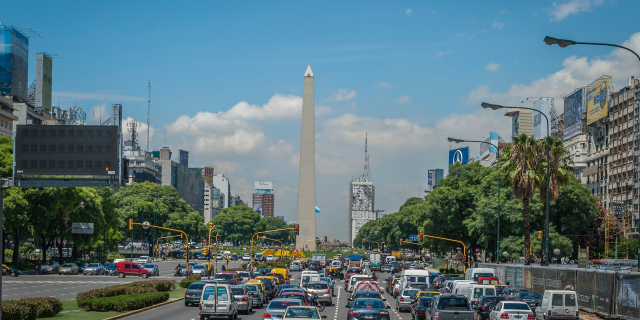








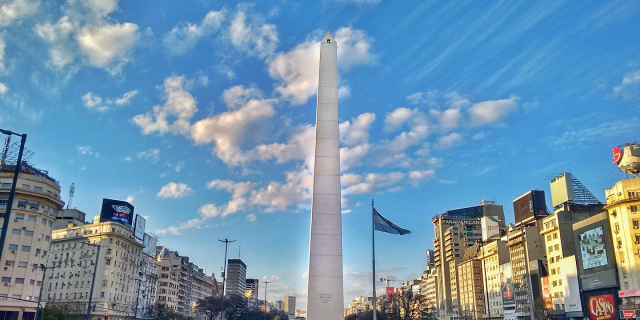



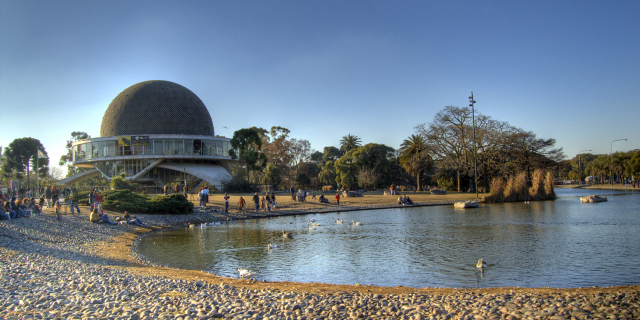

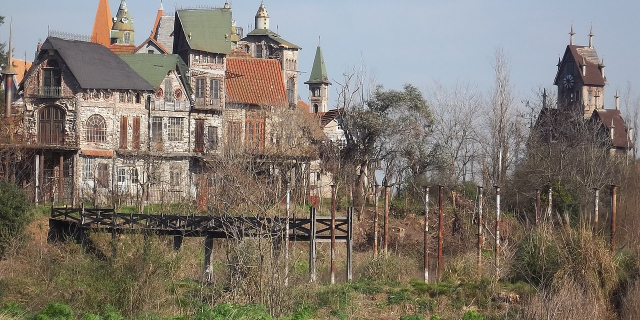
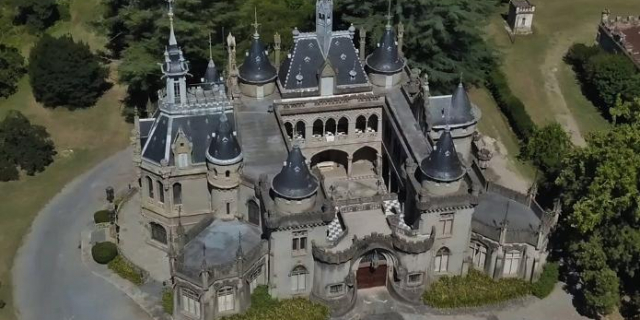

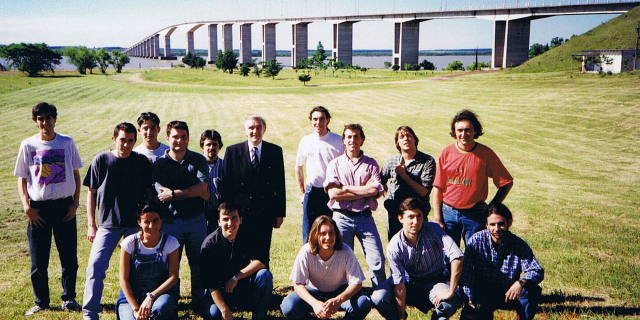

![[محمد السيد] - CC BY 2.0](/sites/default/files/styles/640x320/public/pla/images/2020-05/1280px-M.FERNANDEZ.jpg?h=29234840&itok=HPVGkIVA)

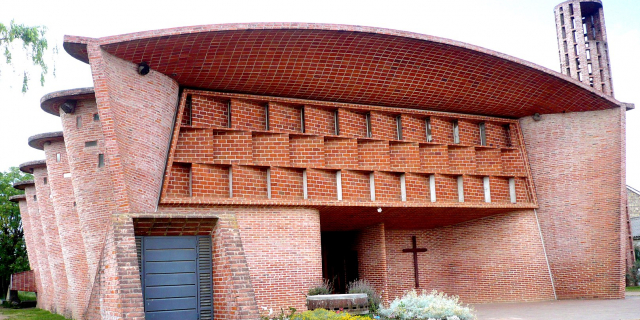



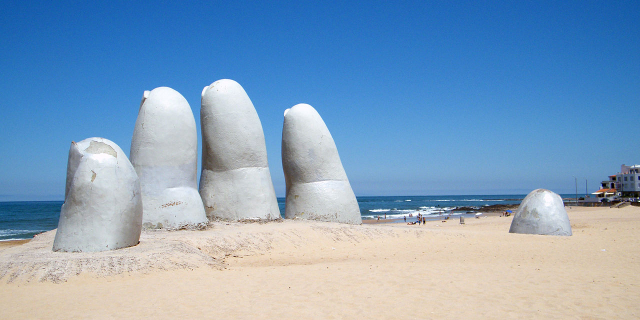



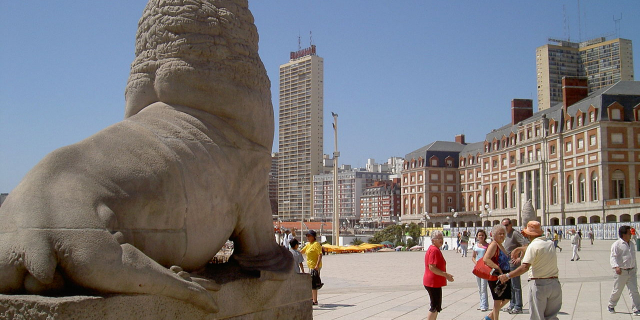
Add new comment